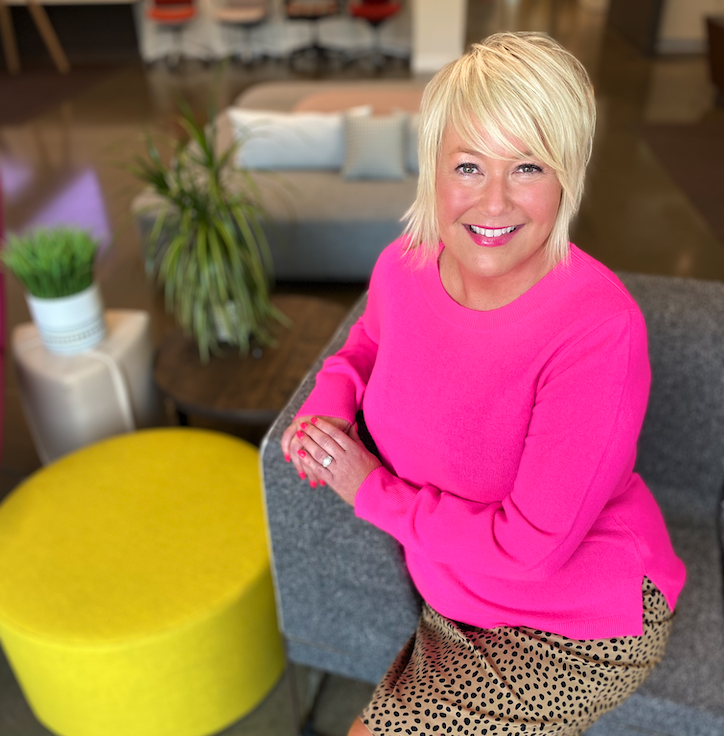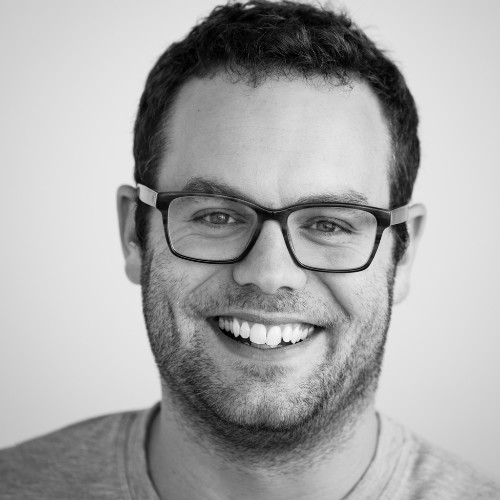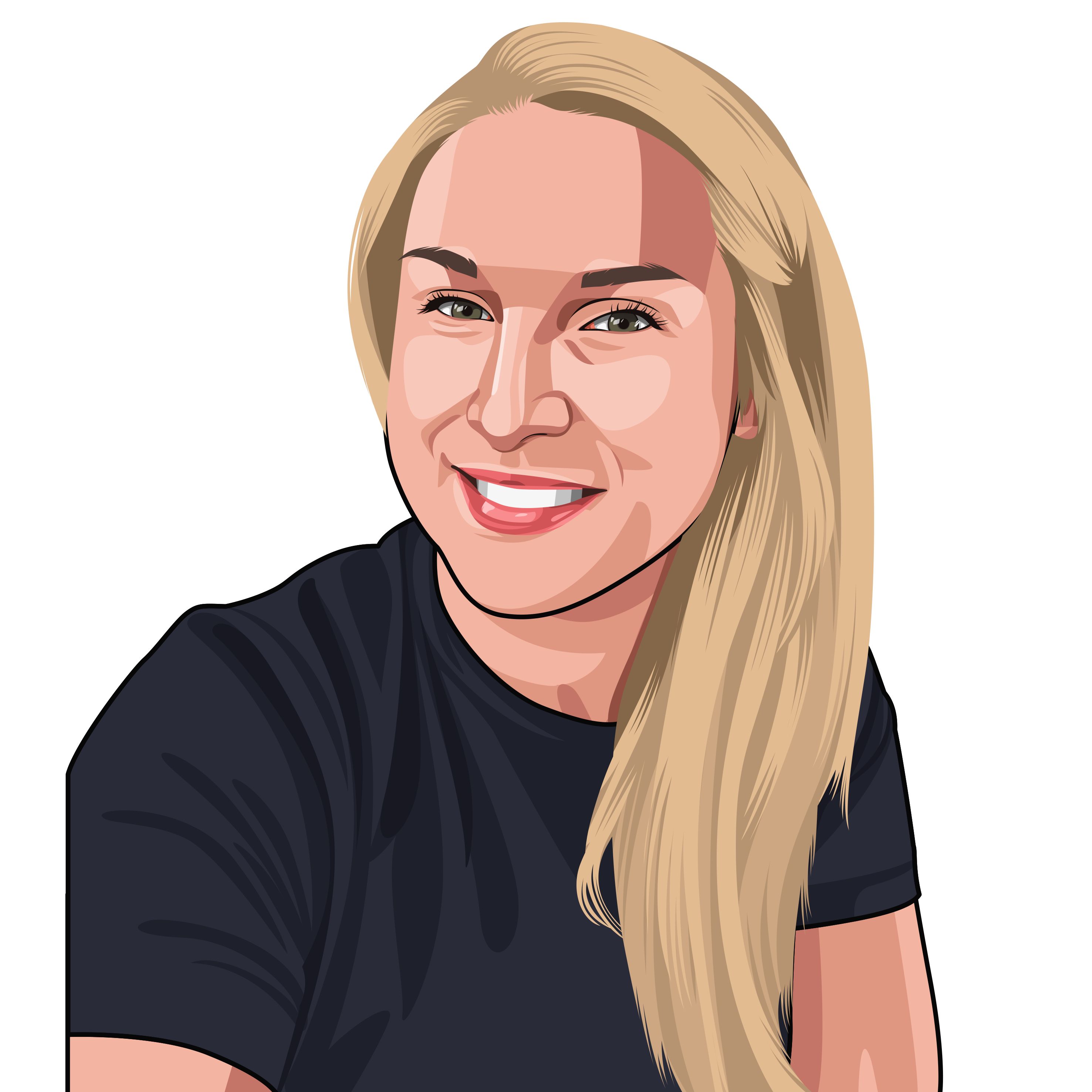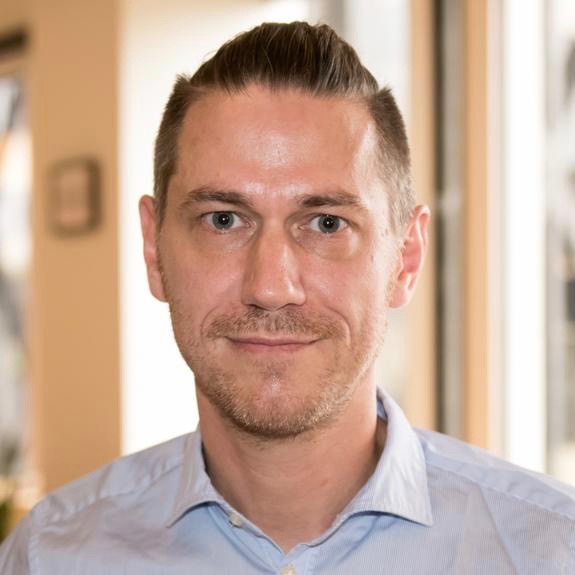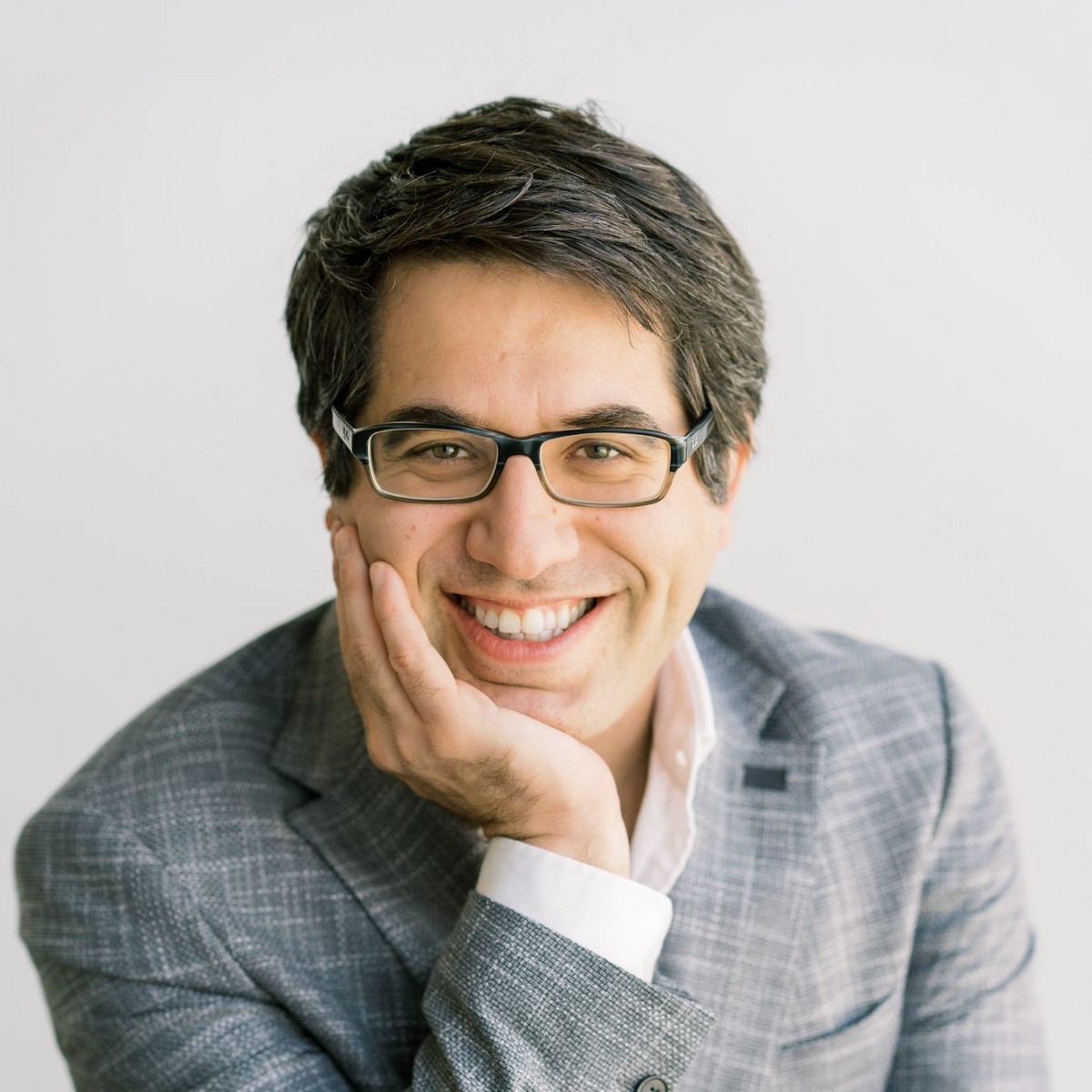When some companies took their first step towards digital work, they announced, “The office is dead.”
Dead? No. But maybe dethroned.
Mary Beth Oakes is the CEO of Business Furniture and has built a solid business around the physical parts of the office. Now that so many companies are experimenting with hybrid and distributed work, what’s the future of spaces?
Modes of work
We started talking about the modes of work and we get into different zones. Mary Beth said that Steelecase has identified five modes: collaborating, focusing, building connections, learning, and rejuvenating. (We’ve got four modes of work – see how they differ here.)
When the office was the only king, it had to make space for all these things. But now, physical spaces and offices can specialize in just one of them. Some people like working at home for focus work, but want to come to the office to collaborate.
Mary Beth says that the secret now is for companies to identify why people want to be back in the office, and then build the office that suits that purpose.
The future of the office
We talked about three big things that are coming for offices.
- Personal preference is going to rule. People want what works for them, and now they’ve had a taste. The challenge is that many people want something different at different points in the day, and businesses need to figure out how to accommodate for this.
- The end of sweeping office trends. We are probably never likely to see another mega trend like cubicles or the open office. Preferences will fragment the office and we’ll see as many styles as there are companies.
- VR’s big chance. It’s impossible to not see how VR has a chance to totally redefine what the office experience is going to be like. It’s the one medium that gives as much preference as you need. The interpersonal interactions are still on their way, but it’s clearly the space to watch for.
Links
Hello, everyone. Welcome back to The Digital Workplace Podcast. Today we have a very special guest. We have Mary Beth Oakes who’s with us today. She is the CEO of Business Furniture. Hey, Mary Beth. How are you?
Hello. How are you, Neil? Thanks for having me.
We’re really excited to have you on. There’s a lot of stuff I want to get into. You have a really interesting perspective on work in general. Then we’re going to talk about furniture and all sorts of things that are involved in work as well. But first, I got to check to make sure you, Mary Beth, are an actual human being. So to do that, I’m going to ask you a question of, do you have a phobia that you would like to break?
Interesting. I would say I have a phobia. This is probably maybe common. It’s a phobia of being in really tight enclosed places. Every time I step into an elevator, I have to think to myself, what happens if this elevator breaks down and I am forever stuck? So yeah, I guess tight closed spaces would be my phobia.
Yeah, I have that. But I choose to never think about that.
Yeah, that’s my problem. When I think about it, that’s when it becomes a problem. If I just don’t think about it, I’m good.
Yeah. Excellent. I love the idea of phobias. I think, for me, having young kids is teaching me to address those again to see what they’re afraid of and what I’m naturally afraid of, too. Heights has never been a big thing. Speaking in public I’ve been able to get over. But I think some like snakes is definitely still there. I think that’s pretty strong.
I’d say snakes, mice, spiders, all of those things that are crawling around, I guess they’re not my favorite, either.
Well, cool. Talk to us a little bit about Business Furniture. Tell us about the history of the company and your role in it.
Thank you. Business Furniture, we have been around. This is our 100th year. So we started in 1922 as the first Steelcase dealer in the world. We have that distinction. So I’m very proud of that because I think it’s really super special. I came on board, I guess, in 1922, not 1922. It feels like it, Neil. No, I joined in 1992. I’m just one of those people, I really was not sure exactly what I wanted to do. I thought I wanted to be a broadcast journalist, but then I chickened out. Maybe I had a phobia. I don’t know. But I just was worried about it. So I heard about this company, Business Furniture. I interviewed with a company. I just thought it was special. I wasn’t sure about the whole furniture concept of working in the office furniture industry. But I really did just notice something special. I felt like they were a place where employees had fun. They were in a place where employees felt valued. I could even just tell that in the interview process, just the way that people interacted with each other. I like the fact they’d been around for 70 years. I felt like that definitely made a statement about what they were trying to accomplish in their business and in their community. I was hooked. My family was like, why office furniture? I really couldn’t tell them why.
You didn’t grow up wanting to work in office furniture?
I wish I could say that I did. But I was not that kid. But I loved it. So I’ve been with the company for 30 years. Then I had an opportunity to start another business called Choreo. That company started in 2008. Now I have a dual role with both companies. So I am the owner and the CEO of Business Furniture. We just became a WBE. So we got woman owned business status about eight months ago. So we’re very excited about that. The other interesting thing, this is how I met my husband, like so many people meet their spouses in the workplace. My husband actually was the owner of Business Furniture. So I started in 1992, as I mentioned, and then we got married in 1999. So he officially retired from the business about a year ago. So he is still my business advisor and my mentor. So that’s nice to have in your back pocket when you need advice and support.
Absolutely. Yes, we all need somebody like that. Great, that is a great context to look at this topic we’re getting in today. I want to get into the furniture side and just the future of what spaces look like. But first, we were on a panel. We were talking and you brought up the idea of modes of work, which I think is an extremely important thing, especially as we’re redefining work, rebuilding it from the ground up, recognizing that you’re not in the same, it’s not just all work. There are different parts of your day. There’s parts of your weeks that come through. So I want you to tell us how you define these different modes of work and what they are.
Yeah, so the modes of work, this is a concept that came from Steelcase. So we are a distributor of Steelcase office furniture, and they are the largest office furniture manufacturer in the world. But I would say they’re almost like more of a research company that happens to build furniture, because they really do care about doing the research, getting the insight that really guides how they create product. It was interesting to me. They came up with this concept during the pandemic. They were trying to think about, when people come back to the workplace, what are they looking for? The whole concept was coming back to something better. What does better look like, right? And so that’s when they started talking about these modes of work. It really made sense to me.
So if you think about how you spend your day working, whether that’s maybe at home, or whether you’re in your workplace, or wherever you are, probably most people spend part of their time collaborating with others, part of your time focusing on individual work, part of your time building social connections, part of your time learning, and then part of the time just rejuvenating, taking a deep breath. So those are the five primary work modes. If you just can imagine, if you really think about where you spend your time every day, you can divide your time pretty much effectively into those five buckets.
What’s interesting to me, we did this exercise with a prospective client about a year ago with their leadership team. We asked them to think about where do they spend their time in those buckets, how much time in each bucket do they spend every day. Each one of them was so different, very different. I think that was a big a-ha for me. Because think about that, I mean, that’s why your office space or wherever you work can’t be one size fits all. It’s got to be able to accommodate different types of work. Those modes, how much time you spend in them, probably depends on your job function, it depends on what your company does. There’s so many factors. But I think if you are able to support those work modes, you can probably do your best work, if you have places to do those specific types of things, you can do your best work.
So what does it look like for a leader, a company, to provide the best environment? Just take one of those ideas. We’ll take the collaborative aspect of it. What is it like to create the perfect environment for that collaboration?
So I would say the perfect collaboration, it can be in an enclosed space or in an open space. It really probably depends on what type of collaboration work are you doing. So if you’re talking about the compensation strategy for your company, you may need something that has some more elements of confidentiality in it, places that can support a confidential conversation. But so many conversations that people have when they’re cocreating something or collaborating together can happen in an open environment. What I usually find works really well is a place that provides ergonomic support or some type of comfortable support, having a place to display content, but also having an analog way to capture brainstorming, so having a whiteboard. I mean, I think all of those are elements that people appreciate when they’re trying to cocreate something with somebody else. That’s really, when I think of collaborating, that’s what I think of. You’re trying to co create something, an idea, a product, something with somebody else, right?
If you can make sure that people have a place where they can whiteboard, where they can display content, where they can be seated comfortably, if you can support all of that within a collaboration space, you’re probably doing a nice job. I would say the icing on the cake sometimes can be access to natural light. Access to natural light has proven to be an inspiring stimulus of how people get work done. So I think that’s a good way. If you flip the coin and think about focus, it’s the same kind of thing. Sometimes people just need heads down focused, concentrated time. That doesn’t necessarily have to be in an enclosed space. It can be. It can be a place where you can close the door. But it could also be sitting in the middle of a team that you don’t normally work with, where you may not be engaged with what they’re doing, and you’re anonymous in what you’re doing. So I guess what I’m trying to say is, I think there’s a notion that for focus work, you have to have a door. You don’t necessarily have to have a door. Sometimes you can just put yourself in a situation where you’re free from having people interrupting you.
That goes into a theme that we’ve talked about before a lot just about the personal preference. When you talk about focus work, I think I probably do my best work when I have limited visual distractions. So peripherally, I don’t like a lot of things moving around. A little bit of hum in the background is okay. But I can’t listen to music with lyrics in it. I can listen to music in general. But as soon as the lyrics come in, that’s distracting for me. But other people are very different. They work best, like they have to go to the coffee shop to focus and they need that hum around them and they need to see a lot of other people and that works well. Just to recognize, wow, that’s tough to design for each individual person to help them set up like that, right?
I think in the old days, I guess, like when I first started in this industry, basically people had cubicles or they had private offices. Maybe there were large conference rooms. I think studies show that that really was not always the best way for people to work in those five modes of work. Sometimes that workstation worked for one purpose, but not for another. I think that’s where that whole notion came about of trying to build a variety of workplaces that help you do your best work. I always think it starts with understanding, what type of work do you do? How do your employees work? What kind of barriers do they perceive in being able to do their best work? For you, for an example, if you’re somebody that needs to concentrate in a place with few visual distractions, but you don’t have the access to that kind of space, you’re probably going to get frustrated and feel like at the end of the day, you didn’t move forward in the kind of work that you’re trying to do.
So I think it’s just about really understanding how your teams work, how employees work, what their preferences are, and try to give them as much flexibility and choice and control in terms of how they work. I think the pandemic was actually a good lesson about that. Because there were some employees maybe that thought that basically just having that one dedicated space will help them to always do their best work. Then you go home, and I know, Neil, you’ve heard me talk about this, I know my work from home experience, I have a beautiful home office. I love it. But sometimes because I’m an extrovert, I would just feel really caged in that one space. I would find myself sometimes sitting on my back porch if I wanted some fresh air and sunlight, sitting at the kitchen table if I wanted to be in the middle of everything, sitting on my sofa if I was looking for more of a comfortable posture. So I found myself kind of working in different parts of my house, depending on what type of work I was doing.
I think most employees, when they were working from home, most team members had that kind of an experience. So when we think about what does better look like, better is just making sure you have that ecosystem of types of spaces so that you can choose where you do your best work. There’s a lot of freedom in that. That might be at your home. That might be from a Starbucks. That could be from your workplace. I mean, I think that’s when it comes down to having to make a decision about where do you do your best work and how do you do your best work.
Mary Beth, you’ve been in the industry long enough to see lots of trends go in and out. So I feel like the last big trend that swept through was that open office type thing where it was just tables everywhere. Do you feel like just even the concept of office trends is done? And now it’s just like it’s all individual. It’s all about lots of options. Everything’s going to be there. You’re not going to see one sweeping trend take over everything again. Or where do you see things going from that?
I think it’s exactly what you just said. I think it’s really about that flexibility and choice and control. The problem with the open office was, I mean, when organizations just opened everything up, I think for people that wanted more focus or a place to go when they needed to get away, that was no longer there. If that’s what you need, that can be really debilitating. I think some organizations were really smart in how they planned their spaces. Maybe they called it open office, but really, it was more about creating an ecosystem of different types of spaces, some that are open, some that are enclosed, some that just were a hybrid of both, or could be both. But I think those organizations that were really smart in their planning, those are the organizations now that have an easier time bringing employees back, those that want to bring employees back, I think that that gives them that opportunity.
In terms of a trend, I think we’re going to see this for a while. I think it’s not a one size fits all. I mean, everybody is so unique in how they work and in how they interact with other people and then what their job is, I mean, what their function is, what they’re supposed to be accomplishing every day. That’s also unique to each person. And even two people could have the same job function, but maybe how they both go about doing their best work can be very different. Maybe one’s an introvert, one’s an extrovert, and they may have different needs, right?
And even day to day, too, right? One day, I want to be around people, the next day I don’t, the same person, but I go through that, too.
I see that a lot. We have, in our space, a social hub. There are days when I see people working from that social hub all day long. Then there are other days, maybe they’re just there at lunchtime. It probably does depend on what type of work they’re trying to accomplish, and how social are they feeling. What are their deadlines looking like? I mean, it’s all those kinds of things, right? So as long as there’s a space for them to be able to do those things. The other thing I like to say is it’s nice when a space can be flexible. I think about our social hub. It’s a very flexible space from the standpoint that it can host our company meeting. It can be a place where you can do focused work. It can be a place where you can collaborate. It can be a place where you can celebrate and socialize. It can be a place where you can just have a cup of coffee and take a break. So I think that’s the other trend that I’m seeing, not only having a variety of spaces, but making sure those spaces are flexible enough to do more than just one thing. They really work hard for you. You really optimize your space when you can really think about multiple ways that it could be utilized.
Mary Beth, tell us a few interesting things, conversations you’ve had with people as they have that thought like, all right, it’s time to offer some kind of physical space to people. We’ve all decided that, yes, we would like this on some kind of basis, whether it’s every day or once a week or once a quarter. What are those interesting conversations you’ve had in the last few months about companies? And the question specifically you’re asking them to help them think about how to make this new version of an office?
I think the first question, Neil, is asking them why. Why do you feel like you need a physical workplace? What’s the role of that physical workplace? And once again, that’s very unique and very specific to each leader, each company. But I think starting with that why will help you understand what kind of space do you need to create or provide or what kind of modifications do you need to make for your space. I think once you understand that why, then I think you have to bring together your team members, your employees, and really try to understand whatever you’re trying to create or do, what are the barriers? What are things that are going to be really great about what’s happening, but what are some challenges potentially? Because I think if you can start to understand what the challenges are and have some empathy around those challenges, then you can help to work through those challenges.
So I think it starts with asking yourself, why do we want to come back? And then as we come back, what are the challenges going to be? What are the opportunities going to be? And then how do we either change our space or refine our space to support that? One thing I think is so critical is asking them about technology. How do you intend, if you’re going to have a hybrid workforce, how do you intend to support people with technology? I know there have been so many times where I’ve regretted the fact that we have not spent more time focusing how to support people that are working remotely, because in our business, I know in our company, we have people working probably two to three days a week from home. And we still are interacting with each other. So how do we support that interaction seamlessly when we all can’t be together? So I think technology has to be a big part of your discussion. I mean, yes, it’s the space and how you lay the space out and how you create flexibility for your team when they’re in the space. But it’s also about how do you keep the remote workforce connected with the folks that are in person? That technology has to be really integrated well into the space. That’s something you have to focus on.
Mary Beth, have you had much experience or thought about virtual reality when it comes to workspaces? Because it’s one thing that, as I’m thinking about these things, you’re talking about modes of work, like, hey, I’m in focus mode. I need something tight and closed and everything so I could set up my own world here, or my own office here. And then hey, we got to switch to a collaboration, we can immediately switch the surroundings, invite some people in, now we’re going to immediately switch to this rejuvenation mode where it’s more of a party atmosphere, so we can move everything out instantly. There’s a lot of opportunities in VR. A lot of it is still coming to fruition. It hasn’t quite got there yet. But what kind of opportunities do you see with that?
I love the concept of that. I mean, I love how fluid that is, and how you can be a part of the conversation, no matter where you are, right? I love that. We have not explored that dimension exactly. Really where we’ve explored that virtual reality is, as we help people to define their spaces, we try to incorporate that virtual reality into the planning process, so that you can see the space and it’s like you’re walking through the space before that space becomes your space. I know for someone like myself, that’s super helpful, because I am not someone that can look at a floor plan in one dimension and understand what that’s going to look and to feel like. So I think even just that’s been so helpful for our clients as they’re trying to make decisions about what they really want, because we can show them now what that’s really going to look like as though they were actually walking through the space. And they can say, oh, my gosh, I love it, or oh, that’s not really what I was thinking. We need to start over or modify here. But I think it’s going to be interesting to see what happens when those virtual rooms pop up when we can start really working in them and it feels like we’re really in that space. But I know we have not gotten there yet. But I know we will. I know that’s the next frontier, right? So we got to be ready for it.
Yeah, when you think about the role of space in the future, I mean, obviously physical space will continue to have a role. That’s going to be there forever. But I think the role of digital space, digital architecture in some of these virtual environments is going to be really key and to be able to provide that kind of flexibility and just options for people, like we said, and now I have that option. I’d be working from the mountaintops and watching the snowfall. I can be working from a beach and never having to leave my home. There’s, obviously, we’re always going to have that real aspect that we’ll miss to some extent, and we’ll have to keep building into, but to have something similar to that is a great possibility.
I think that the pandemic really taught us all that family, friends, our personal time, exercising, doing whatever you do in your personal time is really important. Making space, speaking of space, making space for all that is really important. So how you get your work done is obviously going to have an impact on your personal time and your personal space. And so, I don’t know if it’s ever possible to achieve the perfect balance of both things, but it is nice to think about the fact that you can get them in a little bit more of harmony if you’re intentional about it, and that virtual workplace could be a part of that strategy on creating some more harmony in your work and in your life.
Definitely, well, great. Mary Beth, why don’t you leave us with, I mean, you’re someone who also leads a company. You’re not just talking about this and going through things. So leave everyone with just an encouragement as they make this transition. You’re in the middle of it. This is your business, to look at the future and redesign space and really think about these things. So give people who are also in that space some encouragement about how they should be thinking about the future.
I guess how I would look at it, I would seize it as truly an opportunity. This is an opportunity like never before to really think about your company. What do you want that company to be? What do you want your culture to be? If you look back on this time 50 years later, what do you want that takeaway to be? What’s your legacy as a company? How did you make a difference in the lives of your employees? How did you make a difference in the community? And so I guess my thought would be take a moment right now, as an owner of a business or a leader of a company, to think about what can the future look like? I guess, don’t be afraid to explore all the possibilities, because now’s a great time to embrace that change and to really think about where are you today? Where do you want to be tomorrow? And what’s it going to take to get there? I mean, is it the physical space? Is it technology? Is it different types of talent that maybe you didn’t have access to before that maybe you would have access to now. So I guess my big advice would be just explore all the possibilities. Now is such a good time to do that. It’s a great mindset to be in. I mean, I really am a big believer in your mindset. And your mindset drives you to what you ultimately want to go towards. And so I would have a mindset of curiosity, a mindset of trying to explore and try to imagine, a mindset of imagination to really think about where do you want to go. Now’s a great time to bring your team along with you.
I love that. It’s such a great perspective to have. Mary Beth, if people want to learn more about you and your company, where should they go?
Businessfurniture.net. So www.businessfurniture.net. So we’d love to continue the conversation.
Excellent. Well, great. Thanks so much for being on the show. We look forward to hearing from you again soon.
Thank you, Neil.
“MB” is at the heart of everything at Business Furniture + Choreo. Whether she’s meeting with clients or hosting the team “Wine Down Wednesday”, she’s passionate about making culture the center of every company. Mary Beth graduated from DePauw University with a BA in Communication and has spent the last three decades sharpening those skills to carefully choreograph and engage with leaders to envision and implement their ideal work environment.
Business Furniture + Choreo has recently been recognized with WBE status, (Woman-Owned Business Enterprise) an honor MB is incredibly proud. She is rooted in her desire to mentor women in the workplace and promote female leadership and empowerment- her passions are evident in her work with the Pass the Torch for Women Organization, the Indy Chamber, and the Community Health Network.
She’s a 2017 NAWBO Outstanding Woman Business Owner and recently was awarded as a 2021 Executive Volunteer of the Year for United Way.
When she isn’t scoping out the latest workplace trends, she’s rescuing Cavalier King Charles Spaniels and hanging out on Lake Kesslerwood with her husband, Dick.
